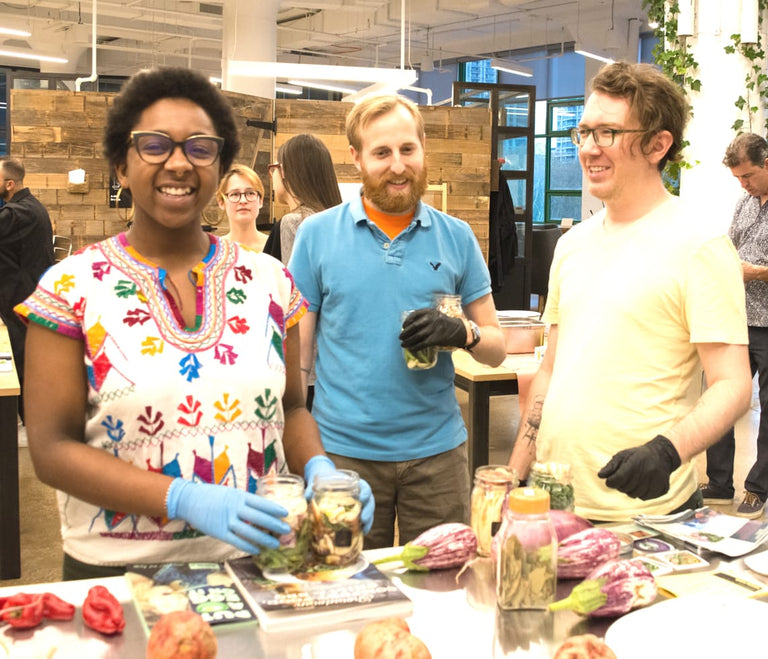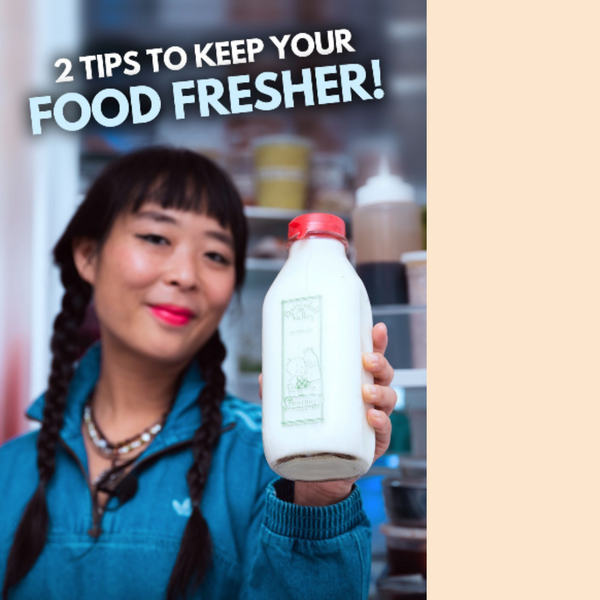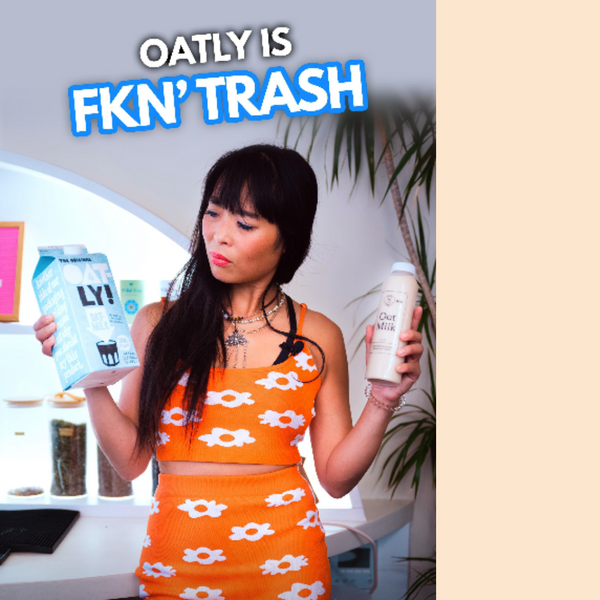From Big Meat to Plant-Based: Greenwashing in the Meat & Dairy Industry

Food shopping in 2021 is no simple task. Greenwashing and other false advertising schemes make trusting labels almost impossible, and words we’ve come to look out for like “organic,” “all-natural,” and “wholesome” seem to have lost their meanings entirely. These and other buzzwords are thrown around, overused, and misused all over the place, so it may not be shocking to learn that large corporations greenwash their products all the time. It may be more disturbing, however, to find out that small, “wellness” businesses like Impossible Foods have committed the same deceptive offenses.
The bad news? Greenwashing isn’t just getting more pervasive, it’s getting harder to spot, and it doesn’t look like government regulations will be coming to the rescue any time soon (at least as of now). The good news? There are options that don’t include scouring the web for transparent information or guessing on who’s being honest.
Beef
Beef is, without a doubt, the most vilified animal protein. It is the most notorious, perhaps most infamous sector of meat production, and we’ve been taught time and again that the toll its production takes on the environment is by far the most damaging of all animal production industries. This has inspired some bad press for burgers and steaks, and it’s convinced most consumers that beef production has to hurt our planet, leaving us with two polarizing options: deal with the downsides or don’t eat it at all.
News flash: raising beef doesn’t have to be bad for the environment; in fact, it can help fight climate change through methods like multi-paddock grazing. This more effective form of rotational grazing is just one example of better habits beef producers could and should adopt. It’s an important practice that helps address real and pressing issues like climate change and soil erosion. In fact, research shows that some ranches practicing multi-paddock grazing principles have been able to sequester an additional 12 tons of carbon per acre over a decade when compared with more conventional grazing practices. So, clearly, the problem isn’t with beef; it’s with factories and facilities that utilize feedlots and other harmful (oftentimes cheap) practices. These major producers are responsible for soil erosion, water pollution, fossil fuel consumption, and methane production, to name a few. It isn’t good for us, and it sure as heck isn’t good for our planet.
The solution? Pasture-raised beef and an emphasis on more sustainable production practices.
Grass-fed beef may sound like the easy choice for buying humanely-raised happy beef, but that really isn’t the case. “Grass-fed” cattle are typically only fed a wholly grass diet early on. They spend the final months of their lives eating grain in feedlots to help them quickly gain weight, no differently than the factory farmed beef. In these confined environments, grass may come fresh or in the form of processed pellets which are sometimes combined with fattening ingredients like fruit mash or molasses. But somehow, some way, by the illogical grace of ill-fitting regulations and qualification requisites, these cows can still easily qualify as “grass-fed.”
Even though it isn’t a label recognized by the USDA, opting for pasture-raised beef means we know with full assurance that the cattle we’re consuming once had ample room to graze and forage, improving (not hurting) soil health. It’s more ethical, sustainable, flavorful, and nutrient dense. Plus, it has more antioxidants, omega-3s, trace minerals, and vitamins than non-pasture-raised beef does, all of which should be an easy sell.
Unfortunately, many less-than-ethical food sellers have capitalized on the jumbled up mess of labeling, enacting subtle but effective greenwashing campaigns to bait and hook well-meaning shoppers. These distributors often misrepresent their products, which can make shopping exceedingly difficult. Because of this travesty, here at Local Roots, we believe in the importance of knowing your farmers. Local Roots has established close relationships with our livestock managers and we regularly check on the livelihood of the animals we buy. Full transparency, no nonsense.
This kind of talk about greenwashing may bring to mind questions of corporate motivation. You may ask, are these campaigns always intended to swindle consumers? What about accidental greenwashing? Some grassland experts, like Dr. Jonathan Gelbard, don’t see all greenwashing as deliberate. Instead, he views this accidental greenwashing as a result of companies' lack of scientific expertise. Regardless of the intent, though (which most greenwashing experts do not see as so inadvertent), greenwashing is no doubt harmful, not to mention difficult to pinpoint.
The most important question to ask ourselves, specialists agree, is: “Certified by who?” This simple query can help weed out the real from the fake effectively and quickly. In the same way that “certified grass-fed” beef may be fed manufactured grass pellets and cereal grain crops (neither of which are real grass), there are labels like “pasture-crafted” that companies like Cargill feature on their packaging, a “certification” that has jokingly been called “beef with adjectives” due to its complete lack of tangible meaning. The fact of the matter is that this beef is still (like its conventional competitors) grass-fed and grain-finished. This label, like many others, stands for nearly nothing, serving again, only to confound and mislead buyers.
In the news, NGOs have stood up in arms against the US Roundtable for Sustainable Beef and its recent framework approach to reduce the harmful impacts of large-scale beef farming for being, itself, a form of greenwashing, proving further that greenwashing isn’t an issue of big vs. small corporations, nor is it a simple one, for that matter. Kari Hamerschlag, food and agriculture director at Friends of the Earth (FOE), told Food Engineering that this type of greenwashing will serve to undermine the organic and regenerative beef producers who are doing real work to “protect natural resources, workers, and animal welfare,” providing another hefty blow to the already shaky movement.
It is for these reasons that NGOs and other organizations are constantly pushing for tighter regulations and the integration of non-harmful practices like multi-paddock grazing into USDA certification frameworks, opting in the meantime to buy from sellers and distributors who have close, transparent relationships with their growers, making the process of exchange one that (instead of feared and sworn off) can be trusted and relied upon.
Pork
Greenwashing in the pork sector is not much different than it is on the beef side. CAFO (Concentrated Animal Feeding Operation) pork is just as unwholesome as it sounds. Packing animals into tight spaces is just as much a cleanliness issue as it is an ethical one since E Coli and other diseases have been known to run rampant throughout CAFO facilities. CAFO hogs eat a slough of waste, and are often fed growth promoters to speed along the entire process. In the plainest of terms, this kind of pork isn’t good for us or for the environment; it’s good for producing cheap, low-quality meat that financially benefits corporations and other seedy sellers.
Here again, such a complicated market leaves plenty of room for greenwashing. One attendee of the Routes to Farm Summit admitted that the loose interpretations of “pastured pork” are among the most bemusing loopholes for pork shoppers. Unlike “grass-fed,” the term “pastured” signifies where the animal eats. Pasture-raised livestock are bred to exhibit natural behaviors on pasture, unlike their industrial counterparts that are bred for inhumane, contained environments.
But since there is no enforced definition of pastured when it comes to raising livestock, “pasture-raised” can mean lots of things, some of which don’t seem to fit the definition at all (sound familiar?). “I’ve visited a few pastured pork farms where the pigs live in a dirt lot that started out as a pasture. It’s far better than raising animals in a confinement building, but calling a dirt lot a pasture is greenwashing,” Erisman explained.
The NOP (The National Organic Program) defines pasture-raised pork as being “within the climate’s grazing season, pastured animals must have constant access to fresh, green forage,” but this isn’t the agreed upon definition for all pork producers, and it isn’t being enforced as such by any government groups. Pastured pork is sure to be more ethical, and it’s much better for us, but the label isn’t one we can trust without hesitation either.
Besides just making sure pasture-raised pork is just that, we can set our sights on some other, more specific labels like heritage breed. Heritage breed pigs are raised for longer than conventional breeds which allows them to develop maximal tenderness and flavor. These hogs tend to be purebred, exhibit omnivorous behavior, and have access to open pastures and ranges to forage (real pasture-raising). Of course, these pigs are also free from antibiotics and other growth promoters or hormones that are sometimes found in conventional pork.
Local Roots sources its pork from our friend and owner of Stryker Farms, Nolan Thevenet. Nolan raises only heritage breed pigs, allowing them to fully utilize their survival instincts, roaming the spacious grounds, foraging, 90% of their food, and getting plenty of exercise, resulting in well-marbled, tasty intramuscular fat. Nolan raises healthy and happy pigs for consumers who care about where their food comes from in a day and age when labels simply cannot be relied upon. Thankfully, personal connections and agricultural systems like ours allow for the dependable provision of high-quality food and produce.
Chicken
Unsurprisingly, moving on to white meat, we find some of the same themes affecting chicken production and marketing. Chicken producers have begun to cut costs, producing cheaper chickens to maximize profits, leaving buyers with less nutrient-dense protein raised without ethics or animal health in mind. This simple “economies of scale” logic leaves consumers at a loss while it puts some serious cash right into the pockets of big-name producers. In many ways, this is thanks to curated greenwashing campaigns.
Take, for instance, Tyson. Tyson is the second largest producer of chicken in the United States, one that boasts “all-natural” labeling on most of its chicken products. Their chickens, however, were proven to have been fed GMO corn which, as one blogger has pointed out, is not in the least bit natural. These “all-natural” chickens have been treated with antibiotics and injected with artificial growth hormones—all this from a corporation advertising “antibiotic free” products.

In 2007, the United States Department of Agriculture came across the use of gentamicin and ionophores in Tyson chickens and enacted an eco-fraud litigation suit against them. This particular case of blatant greenwashing and false advertising was met with litigation and backlash, which is something to be celebrated. But this somewhat rare repercussion also reminds us that greenwashing goes unpunished quite often, and isn’t just claims of “antibiotic free” meat containing antibiotics that slide by unpunished.
Mike Badger, host of a popular pasture-related podcast, touches on this in his episode on pasture-washing which he calls “the latest greenwashing craze” among chicken producers. He explains the phenomena as occurring when companies wish to capitalize on the success of pasture-raised chickens, but do not follow the guidelines of raising their livestock according to such principles of production. In other words, it’s a form of greenwashing. Outdoor production and regular flock movement are often missing from these so-called pasture-raised chickens, though this hasn’t stopped producers from attaining pasture-raised certifications despite such obvious shortcomings.
Eggs
In the same vein, eggs suffer these and other greenwashing injustices. Shoppers seem to gravitate towards cage-free, free-range, and farm-fresh eggs for reasons we needn’t explain (hint: buzzwords make us think we’re being responsible shoppers), but that doesn’t make these phrases meaningful.
Cage-free just means that hens don’t live in cages. It might be a USDA regulated label, but it doesn’t indicate how much space chickens or how much time each spends outdoors (peep our egg-sposé on egg labels here). Free-range? Despite being a USDA regulated label, this term states chickens must be allowed “access to the outside,” which does not guarantee that a hen sets foot outside (careful attention to language makes a difference here). The term farm-fresh is just as unregulated as the above two are, and offers even less concrete meaning. It does, however, conjure up favorable images in consumers’ minds, experts have found.
Wattleridge, the home of the “environmental egg,” for instance, is not so environmental, truth be told. It turns out that these “environmental” eggs are the products of caged hens.

Despite the fact that caged hens are not, in and of themselves, detrimental to the environment, calling eggs “environmental” does seem to be at odds with the fact that Wattleridge hens are confined in spaces smaller than an iPad for their entire lives. Sick and injured birds often go untreated and some of these birds never get to see sunlight. Do these sound like environmental eggs? Not quite.
Now that we’ve covered the basics of meaninglessness in labeling eggs, it’s time to point to a few labels we can trust, the first being Animal Welfare Approved. This label is applied to independent, small farms with a maximum flock size of 500 birds, and means birds spend unlimited time on pastures untreated with pesticides. This is an obvious ethical improvement to the above regulations, but eggs that come from pasture-raised hens also happen to be higher in vitamin A, E and omega-3s, as well as lower in cholesterol and saturated fat.
Feeling a bit frazzled by all this? Local Roots has you covered. Our eggs, sourced from Yellow Bell Farm, are produced by happy, rotationally foraging hens who, when they do feast on feed, are fed locally grown and milled grain. Such diverse diets paired with some of the most optimal living conditions contributes to some seriously brightly-colored yolked eggs that taste as delicious as they are nutrient dense.
Dairy
Moving on to the final leg of this brief greenwashing tour, we come face to face with the dairies. Greenwashing is at work here, too—even among companies that emphasize their commitment to sustainable practices, making it all the more difficult to discern.
One of the biggest names in ice cream, Ben and Jerry’s, has been praised for eco-friendliness and labeling GMOs in their products, making them a favorite among ethically-inclined shoppers. Despite their avowed devotion to sustainable production, the company came under recent fire for some pretty blatant greenwashing on its packaging. It turns out these ice cream gurus, like most other conventional brands, support one of the greatest polluters in the world all along: CAFO farming.
Overproduction for financial gain is the name of the game for these farmers, and it has taken a toll on the cattle as well as the quality of the products themselves. Cornell researchers have found that the annual death rate among CAFO herds is now slightly over 10 percent, and may cause enormous environmental pollution that has had lasting negative effects on soil, water, and air. Vermont state officials have confirmed that CAFOs such as the ones which produce milk for Ben and Jerry’s ice cream are responsible for at least half of the environmental damage in the state and almost 80 percent of the pollution in Lake Champlain. That doesn’t sound much like a commitment to eco-friendliness to us.
The good news is there are sources for information that we can trust. The Cornucopia Institute’s Organic Dairy Scorecard is a lifesaving tool for consumers to judge the organicness of products. Dedicated to achieving economic justice for small-scale farmers, the institute offers in-depth reports on products and their adherence to organic standards (whether or not these are regulated in USDA terms). Check out the scorecard here.
Horizon Organic, Dean Foods, and Aurora Organic are among some of the more respected brands that did not score well on the card, as were some safe-seeming private sellers such as Trader Joe’s and Costco. Most of the companies that scored high with the Cornucopia Institute, in turn, were small-scale distributors like Thistle Hill Farm, Julie’s Ice Cream, and other more localized producers that hold themselves to a high standard in organicness.
Speaking of local, Local Roots super-premium dairy products come from an array of trusted local farms like Ronnybrook, Battenkill Valley Creamery, and McGrath Cheese Company, all of whom provide us with some of the most sought-after, well-produced dairy in the northeast. Pesticide-free, non-GMO butter from happy cows? Milk without artificial growth hormones that’s bottled within eight hours of milking? Award-winning small-batch cheese? Yes, please!
Escaping Greenwashing
Escaping meat and animal products is not the solution to escaping the greenwashing; just ask plant-based protein experts. Even plant-based protein products such as Impossible Foods are responsible for greenwashing (most often by adding ingredients that preserve, stabilize, or thicken their products). Impossible Foods plant-based “meats” have twenty-one ingredients, and quite a few of these are additives and artificial preservatives. Some are even petroleum-based.
Instead, consumers should take full advantage of trustworthy resources like those from the Cornucopia Institute and other unaffiliated organizations that work to spread verifiable information about the foods we eat. Because this process can be unfairly puzzling, though, we encourage applying our favorite never-failing advice: know your farmer. It’s really that simple. Buying from companies that build genuine relationships with their growers and suppliers is the key to eating ethically, eating healthily, and eating deliciously, and we wouldn’t have it any other way. Greenwashing isn’t going to disappear anytime soon, but that doesn’t mean we can’t beat it at its own game and focus our attention (and patronage) on growers and companies producing sustainable, ethical food.
Article by Local Roots Volunteer Jess Santoro (@jess_santoro)
Rather have a taste first?
Local Roots Experiences are fun, pop-up events where we bring the farm to you!

Become a Harvest Club Pick Up Location
Are you a NY based cafe, bar, or neighborhood business? Become a Harvest Club pick up location and have community members come to your establishment each week to pick up their Local Roots harvest.
Top






